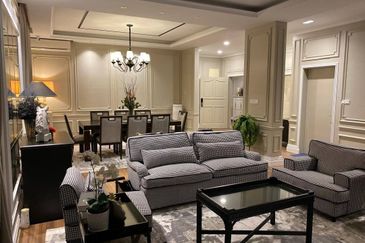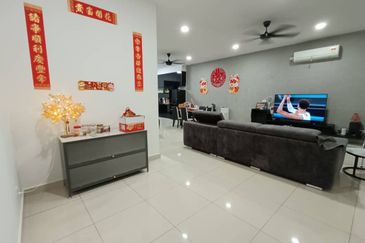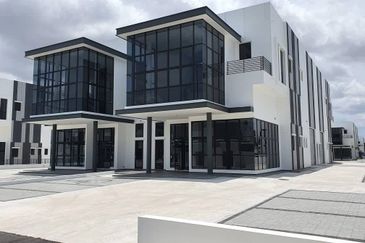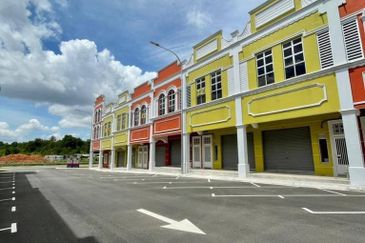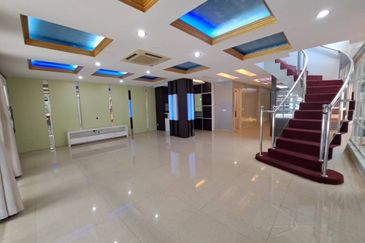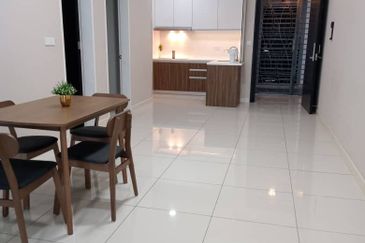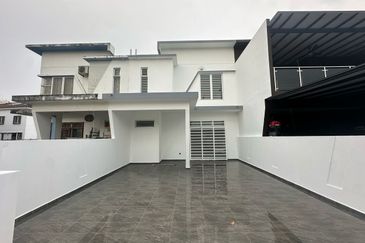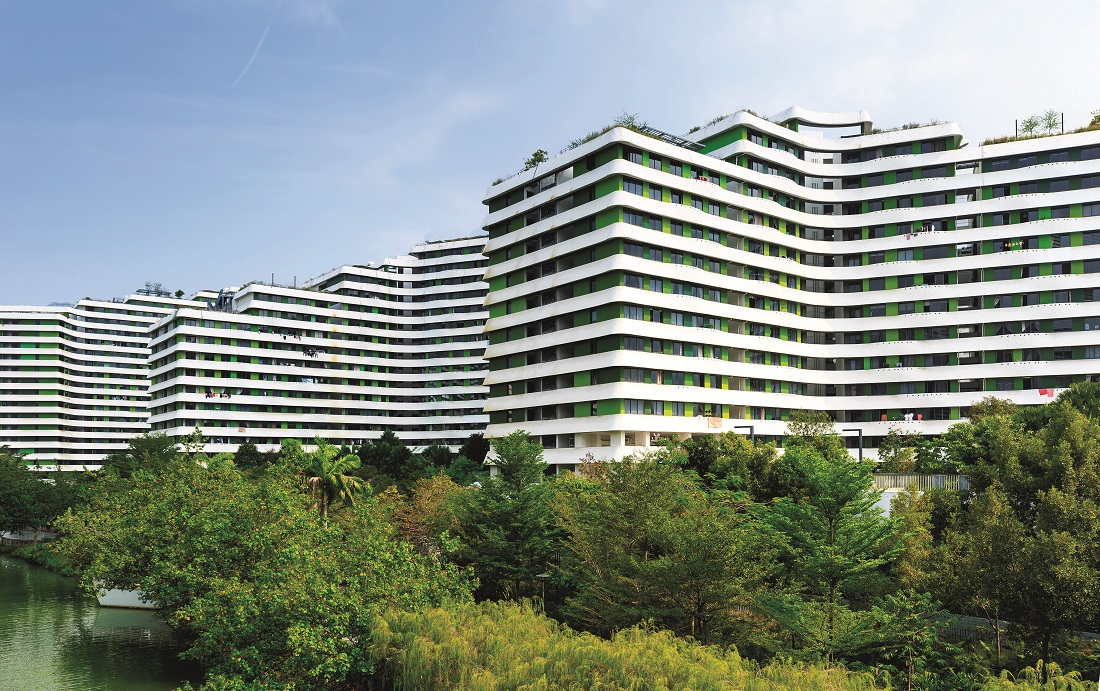
According to the United Nations’ World Urbanization Prospects: The 2018 Revision Report, as of 2019, 76% of the Malaysian population resides in urban areas and the percentage is projected to reach 87.3% by 2050.
Based on data from the Department of Statistics Malaysia (DOSM), the Federal Territory of Kuala Lumpur has an estimated population of 1.8 million in 2018, which translates to a population density of 7,407 per square kilometre, compared with Singapore’s population density of 7,804.
With rapid urbanisation and the growing population within cities, high density living is increasingly dominant around the world. Furthermore, the low- to mid-income segment of the population especially, would only be able to afford to live in crowded high-rises.
Easing urbanisation impact
Although this could be up for debate, well-planned high-density living could be a solution to counter the negative impact of urbanisation.
Malaysian Institute of Architects (PAM) president and VERITAS Design Group vice-president and director Lillian Tay opines that high density living should be promoted as a way to solve traffic congestion and reduce air pollution caused by heavy traffic — the challenges often faced by developing cities.
“People are moving to the outskirts as they cannot afford to live in the city centre, but they still have to travel into the city for work, causing bad traffic congestion,” she tells EdgeProp.my.
To mitigate the traffic congestion, people need to live near their workplace or in close proximity to public transport facilities. Sadly, partly due to lack of accessibility to the stations from people’s homes and their workplaces, utilisation rate of our rail-based public transportation remains low. The Ministry of Transport has identified low utilisation rate of public transportation as one of the challenges to be addressed through the National Transport Policy (2019-2030).
Deputy CEO of Singapore’s Housing & Development Board (Building) Fong Chun Wah tells EdgeProp.my that high-density living could bring benefits such as lower transportation energy consumption thanks to shorter trips and higher public transportation modes. “People could also save on the cost of traveling, as many amenities and conveniences could be within walking distance,” he says.
Furthermore, the same amount of street lights and traffic lights could serve more people in a high-density area than a place where people live along long stretches of road, he notes.
High-density living seems inevitable in the city but how can they offer quality living? This matter could be addressed through two aspects — neighbourhood planning and building planning.
A liveable neighbourhood
Housing density is defined as the average number of persons in a unit of space in a residential area (number of persons per hectare). Based on the planning provision under the Kuala Lumpur Structure Plan 2020, a development with less than 100 persons per ha (1ha = 2.47acres) is categorised as low density, between 101-300 persons per ha as medium density and above 301 persons per ha as high density.
The Kuala Lumpur City Hall (DBKL) has set the limit for housing density at up to 400 people per 0.4ha (one acre) for free market projects, and 1,000 people per 0.4ha for 100% affordable housing schemes.
Contrary to popular belief, quality living environments can be achieved if the high-density development and its surroundings are mindfully planned.
Sufficient infrastructure and amenities
From a city planning perspective, Fong points out that liveability in a high-density housing area needs to be supported by sufficient infrastructure, including well-planned rail and road networks; easy access to sufficient amenities such as schools and health facilities; as well as recreational areas and greenery.
“For instance, if children can walk to school, it makes things a lot easier [for parents],” he says.

PAM’s Tay also notes that to make high-density living attractive, there should also be enough public spaces for community interaction and cultural life to take place.
Collaboration between various parties needed
In Singapore, land use is carefully planned due to scarcity of land. Thanks to the Housing & Development Board (HDB) — the centralised authority that regulates the country’s public housing, which is the largest portion of all housing in the country — optimised plans could come into reality.
Fong says that the HDB uses the ‘checkerboard concept’ to enhance liveability by interspersing high-rise with low-rise developments to provide visual and spatial relief to the residents, citing Singapore’s Punggol Eco-Town as an example.
However, the development of buildings in Malaysia is controlled by various authorities and although it may be challenging, there is a need for all authorities to adopt the same sustainability principles across the country in new developments, Tay opines.
She adds that city planners and developers should also work together to provide safer sidewalks, better street lighting and enhanced security in the neighbourhood, as walkability is one of the benefits that could come along with well-planned high-density living.
The right building design
Zooming into focus on the building itself, its design is vital in ensuring its liveability. Good passive design planned from the very beginning could prevent many problems in the future, while at the same time not requiring a huge amount of additional cost.
Some space and air
Due to expensive land prices, housing units in cities are becoming smaller, thus common open spaces and green areas bring much welcome respite. Tay suggests that greenery be distributed across various parts of the buildings to give people more opportunities to enjoy nature and the outdoors.
Living in a high-density area does not mean giving up natural wind and light. To enhance natural ventilation and natural light further, one could incorporate open corridors and openable windows.
“Western building designs usually have enclosed corridors due to their cold weather, but we should not blindly follow them since the Malaysian weather is milder,” she stresses.
Balance heat and light
A well-designed high-rise residential unit should have a nice balance of solid walls and exterior windows, which essentially offer a balance of heat insulation, natural light and wind.
“Choosing high performing glass windows could help prevent heat but still allows light to come in,” Tay says.
A good building design does not only ensure good comfort levels but also helps its users save energy by using less artificial lighting and air-conditioning. “For example, if there is a window in the bathroom, you don’t have to turn on the lights every time you enter the bathroom,” she cites.
Meanwhile, Fong notes that the facing direction of units is also an important aspect that affects indoor temperature.
Be considerate As Malaysia is a very family-oriented society, houses need to suit the needs of all generations.
“A secured balcony would be good to let families with young kids have a private yet safe open space.
“However, it is very difficult to install grilles by ourselves in high-rise buildings. Hence, adding suitable building envelopes to ensure balcony safety is something that should be taken into consideration at the design stage,” says Tay.
This story first appeared in the EdgeProp.my pullout on Nov 8, 2019. You can access back issues here.
TOP PICKS BY EDGEPROP

Gerbang Nusajaya @ Iskandar Puteri
Iskandar Puteri (Nusajaya), Johor
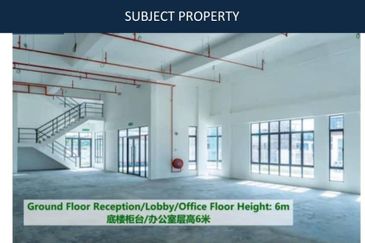
Taman Perindustrian Cemerlang
Ulu Tiram, Johor




